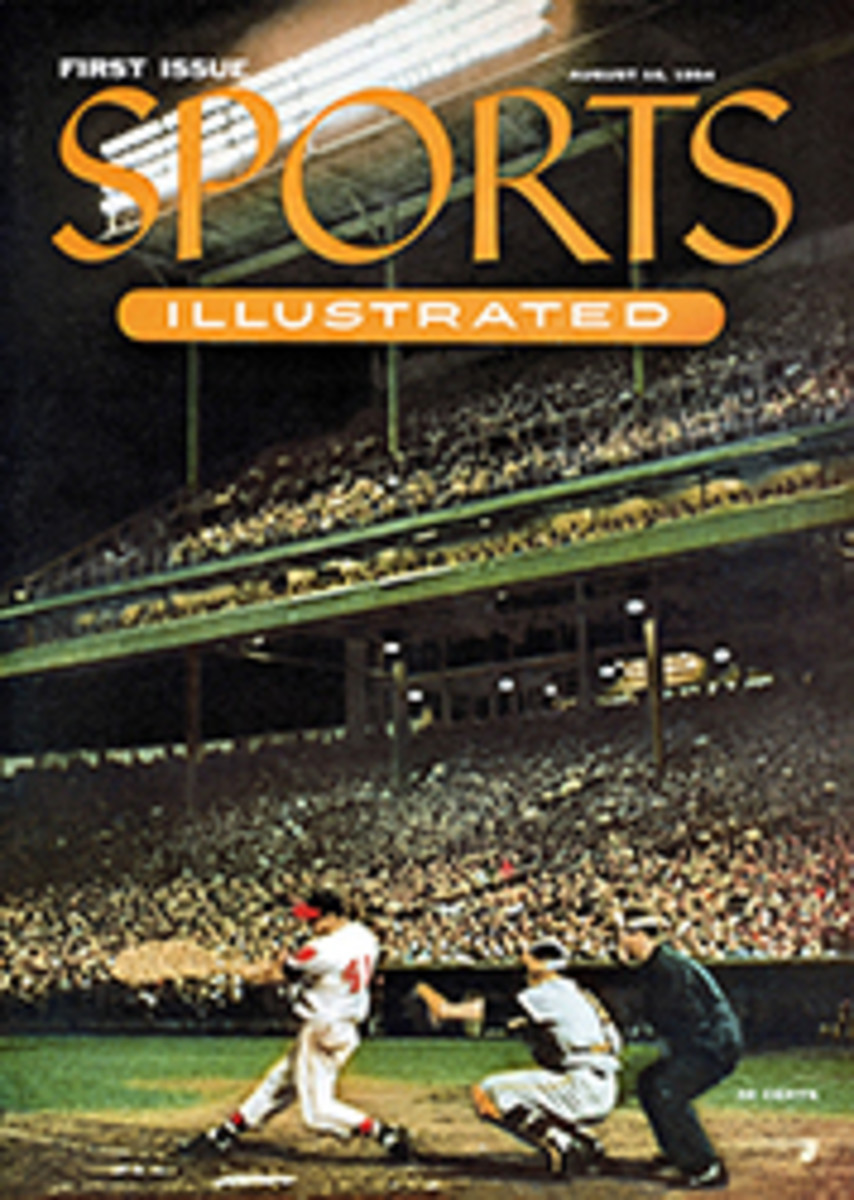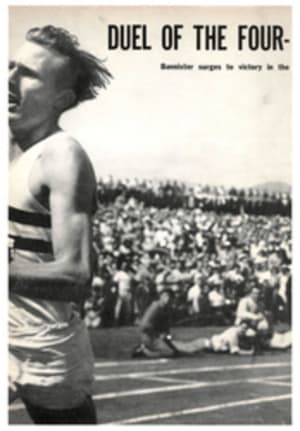
THE BIG BOOM
It couldn't happen to a nicer sport, the honor which seems due to fall upon the one known as boomerang throwing. It will soon be a new entry in the Olympics if the Australians have their way, which you can be pretty sure they will have. Because the '56 Olympics are slated to be held in Australia's big town of Melbourne—and the boomerang thrower happens to be one athlete that the land down under is practically crawling with.
The reason for it is that such a flat continent makes a natural arena for the sport. But actually, to enjoy the fun that can be had with this sickle-shaped piece of oak, hickory or maple (any hard wood is O.K.), all you really need is one vacant lot or open field, with both of which our unflat continent is loaded.
This is a fairly simple sport to learn. Almost anyone—boy, girl or even old folks—can handle a boomerang well enough to get satisfaction from it after an hour or so of practice. And one sensationally nice point in its favor is that it's the only thing you can ever hope to own which, when thrown away, retrieves itself. Now, that's what you call a sweet possession.
The dictionaries describe the boomerang as a hunk of wood shaped in the form of an obtuse triangle, flat on one side, convex on the other—a big-word way of saying it looks a lot like a sawed-off field hockey stick. Thin as well as hard, the stick can run in length from one foot to four. And, sailed right, it performs tricks which the world's top-billed magicians aren't quite up to.
One of the most breathless of them ever pulled off by the boomerang took place, logically enough, in Australia. There, some years back, a boomerang champ of 40 years' standing astounded an audience by performing the William Tell act with this magic stick. The champ balanced an apple on his head, threw the boomerang, then stood perfectly still to await its return voyage. It sailed out 100 yards, circled five times and then came zooming back. It clipped the apple cleanly off the champ's head without ruffling his hair and plummeted to earth.
Well, that's strictly for champs. But a lot of fun can be had with a boomerang just by going to an open field and throwing it. At one end of the field, the boomeranger grasps the curved gizmo in his throwing hand. He holds firmly to one end, rounded side faced inward, with his thumb pressed against it, palm flattened on the flat part. Because this magic stick has the temperamental trait of retrieving itself only when hurled into the wind, he faces that way.
He draws it back behind his head. He lashes it forward in an overhand swing, following through as in golf or baseball. Then he releases the stick with a short, upward jerk, almost as though he's about to skip a flat stone across calm waters. That final jerk is a very important piece of business; without it, the boomerang gets off to a slow, spinning start which means it won't revolve fast enough to make the full return trip. Once the stick has taken off, it no longer seems to be a stick. It seems to be a pint-sized flying saucer.
The stick now turned into a disc against the sky skims swiftly through the air until it runs out of gas. There it rises like a tiny airplane about to loop the loop. When it has shot up a hundred feet or so, it seems to waver, almost suspended in mid-air. Miraculously, at this point, it turns itself around and comes zooming back to its boss, sometimes striking the turf almost within reaching distance. Homing pigeons have nothing on this.
The boomerang got its name in Australia and came of age there. But it was used in ancient Egypt, Assyria and India. In those places it was a weapon of tribal warfare, just as it was with the natives of New South Wales in Australia, where the little brown bushmen of the Arunta tribe finally christened it. They called it bumarin or womurrang, depending upon whether it was the kind which retrieved itself, or a second type which is designed to travel straight, at incredible distances—first kind for hunting, second kind for fighting.
About this second type, there's a story out of England where—at a public meet, a sort of World Series of boomerang champs—one of them was thrown a record 180 yards. Now, that's not only almost the distance of two football fields but it represents 540 feet, which is just about the distance that Mickey Mantle hit his record home run in Washington last season. There's no telling what a pitcher like Bullet Bob Turley of the Baltimore Orioles could do with one of these.
However, boomerang throwing has never caught on widely in the American world of sport. Why? Well, the trade seems to think it's mainly because the magic stick—which costs from $1.50 to $5—is so breakable. But that shouldn't pose too tough a problem. Because the boomerang these days is also made out of plastic, which stands up under a beating that wood will not.
There's an awful lot of real excitement in the boomerang. It gives the thrower a sense of supernatural power. In fact, the way one boomeranger put it once was: "It's sort of like playing around with a live eagle."
ILLUSTRATION
PHOTO
OVER 21
ANGLING HORSEWOMAN
For the fisherman who doesn't want to get his—or her—feet wet, Dela Hudley of Granby, Colo, has the answer: fish from horseback. Mrs. Hudley has been doing just that for 50 years. Now 90, she's yet to get wet and has caught some 5,000 fish.

